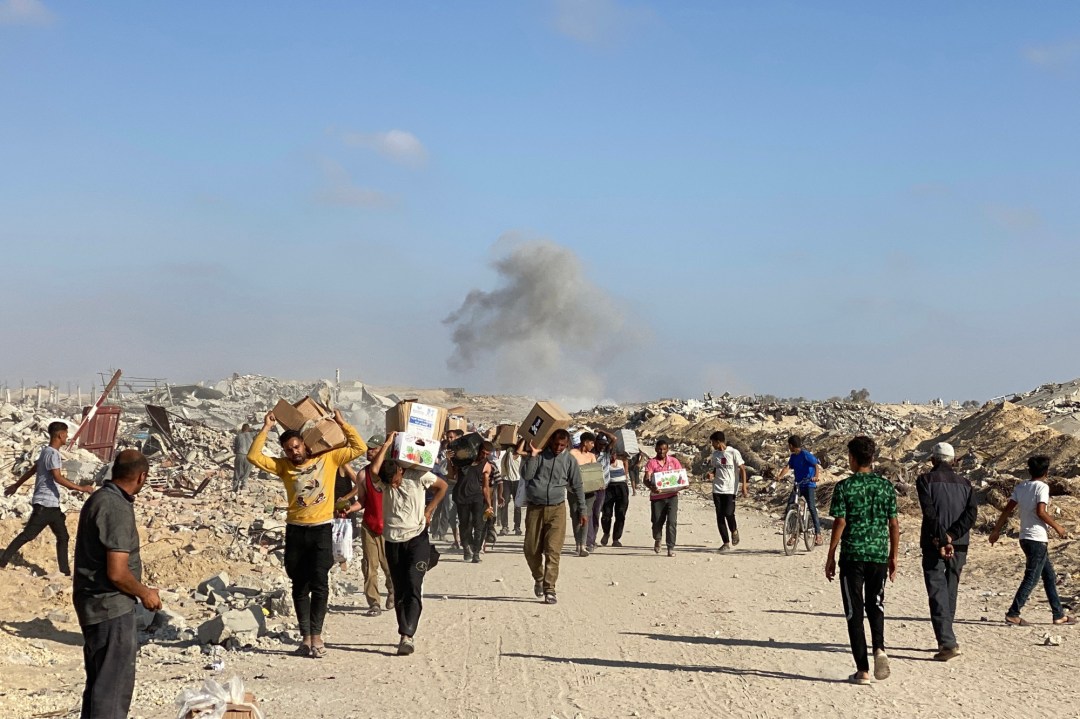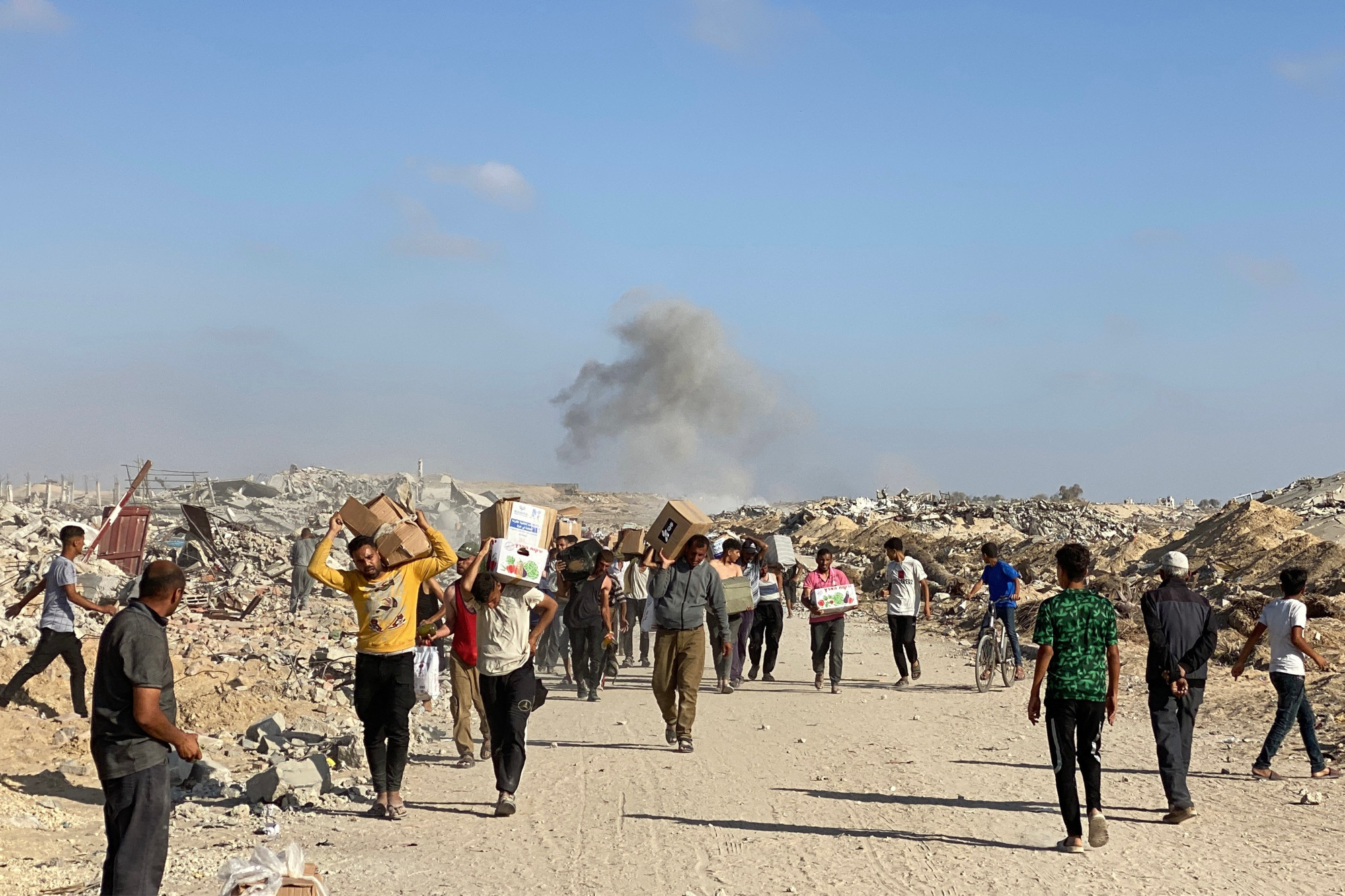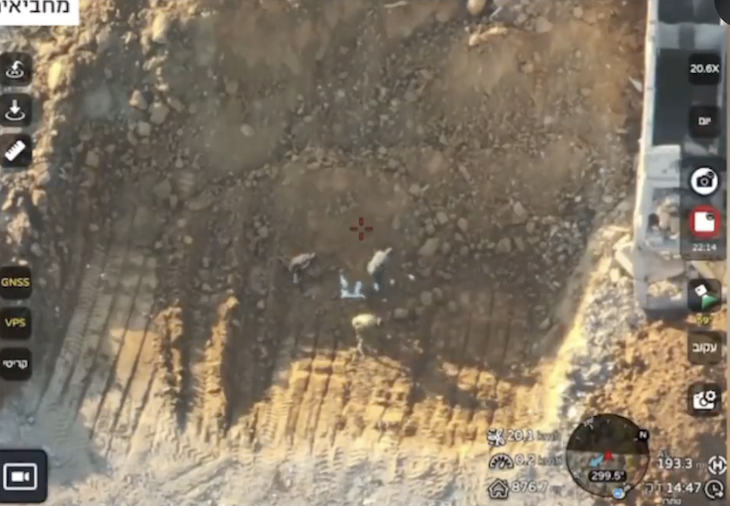If the war in Gaza has taught the world anything, it is this: truth in war is rarely immediate. In the fog of conflict, facts take time, evidence can be manipulated and early narratives are often weaponised. Yet time and again, much of the international media – and too many public officials – refuse to learn this lesson. Faced with shocking claims, particularly when they implicate Israel, they rush to publish, to condemn, to headline. Rarely do they wait for verification. Even more rarely do they correct with the same urgency when the facts unravel.
In the fog of conflict, facts take time, evidence can be manipulated and early narratives are often weaponised
Yet another example of this phenomenon arose in the early hours of Sunday morning, when headlines raced across international media: ‘Dozens killed as Israeli tanks open fire near aid distribution centre in Rafah.’ The implication was immediate and visceral – Israel had slaughtered starving Palestinians queuing for food. Outlets including the BBC, Sky News, and others rapidly published stories citing ‘local medics,’ ‘witnesses,’ and ‘health officials.’ Some pieces mentioned ‘Hamas-run’ sources, but this was often added in quiet edits, hours later.
The story unfolded with breakneck speed. Around 5:30 a.m. local time, the Red Cross hospital in Gaza reported a ‘mass casualty influx’ of nearly 180 wounded. No specifics were offered, only that the injured had been trying to reach an aid site. By mid-morning, a British doctor affiliated with Medical Aid for Palestinians publicly stated the location was the Gaza Humanitarian Foundation centre – one of the new aid hubs run in cooperation with Israeli and American partners. Before long the claims that Israeli tanks had fired on the crowd were rife. From there, the allegations spread like wildfire.
By the time Israeli officials were receiving press enquiries, the global narrative was already set: Israel was to blame. Asked about the reports during a Sky News interview, Israel’s Deputy Foreign Minister Sharren Haskel urged caution, stating clearly that facts were still being gathered. Trevor Phillips was having none of it. But Haskel was wisely warning that Sky might like to investigate and wait for more facts before rushing to conclusions. Meanwhile, seasoned journalists doubled down on casualty numbers and witness allegations. The underlying facts were still, at best, sketchy.
But then the narrative began to be questioned. First came video footage, released and shared by Israeli officials, claiming to show crowds gathered at the distribution site during the time of the alleged shooting. The scene was calm. People crowded for food but there were no gunshots, no panic, no bodies. It wasn’t conclusive proof of what didn’t happen, but it was certainly not what one would expect at the time of or in the aftermath of a massacre. This security footage from the distribution site itself, reportedly timestamped to the window of the alleged shooting, showed no violence, no casualties, no chaos. If accurate, this undercut the entire premise of the original story.
Still, many in the press held the line. A prominent Palestinian activist dismissed the footage as ‘just a four-minute clip’ that ‘proves nothing.’ That may be true – it doesn’t prove definitively what happened – but it does force a deeper question: why was the original, far more dramatic claim accepted with no footage, no corroboration, and no scrutiny?
Then came the drone footage, said to be captured by the IDF, appearing to show masked, armed militants – presumably Hamas fighters – throwing stones and opening fire on Palestinian civilians near the site. According to the IDF, the attackers were trying to block or disrupt the distribution of food not under Hamas control. No surprise, given Hamas’s desperation at their loss of income and control after being cut out of the aid distribution cycle.
We do not yet know precisely what occurred near that aid site. It’s entirely possible that people died or were injured under circumstances not yet fully understood. War zones are chaotic and truth is elusive. Israel itself has occasionally issued premature or inaccurate statements under pressure – such as in the case of the shooting near ambulances, where initial accounts were later revised. Unlike Hamas, Israel is careful to revise and apologise where errors are made, in an effort to reach the truth through the fog of war. What is undeniable is the reckless speed with which much of the media, and several public officials, seized on a narrative of Israeli guilt based on unverified claims from Jihadi terrorist-affiliated sources. This isn’t just a lapse in judgment. It is a systemic failure – a failure of editorial discipline, of intellectual humility, and of moral seriousness.
Some journalists have argued that if Israel won’t allow unrestricted media access to Gaza, then reporters cannot be blamed for relying on local sources. But this is a non sequitur. Restricted access does not justify abandoning scepticism. It certainly does not justify laundering allegations from a terrorist organisation with a vested interest in manipulating western coverage. The very reason Israel and others are cautious about press access is precisely because of how easily propaganda can be staged in such environments. Imagine how much worse these outlets would be if their reporters were literally and physically at the mercy of Hamas within the Gaza strip.
This episode echoes the now infamous Al-Ahli hospital incident earlier in the war, when Hamas blamed Israel for a blast that killed hundreds – only to be later disproven by forensic analysis, intercepted communications, and independent investigation. But the damage was done. Global outrage had already flared. Protests erupted. Diplomats reacted. A lie had travelled halfway around the world before the truth could log on.
Journalism is supposed to speak truth to power. But that mission is undermined when truth is replaced by reflex, and power is defined selectively. The press is at its most noble when it questions claims from all sides, especially in war. Yet too many respected outlets have surrendered to a form of moral immediacy, driven not by evidence, but by the instinct to believe the worst of Israel and the best of its enemies.
This kind of careless reporting inflames public opinion, hardens diplomatic divisions, and undermines the legitimacy of genuine human rights work. Worst of all, it insults the intelligence of those seeking truth in a world already drowning in lies. No one is asking journalists simply to take Israel’s word at face value. But the very least we should expect is they don’t take the word of the murderous, ruthless, lying, fanatical Jihadist Hamas at face value either.









Comments